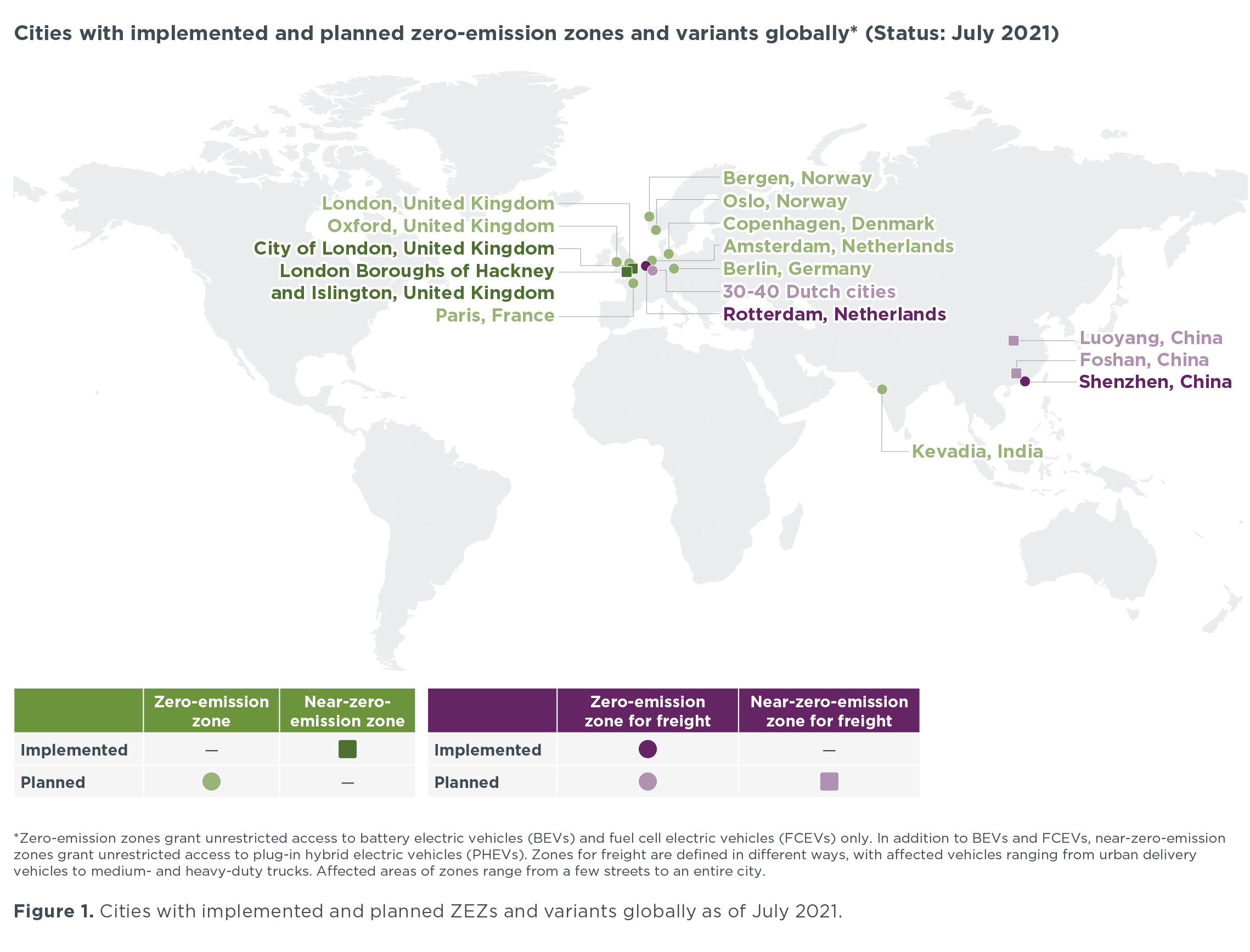Impacts of the Paris low-emission zone and implications for other cities
Briefing
A global overview of zero-emission zones in cities and their development progress
(点击此处看中文内容)
A zero-emission zone (ZEZ) is an area where only zero-emission vehicles (ZEVs), pedestrians, and cyclists are granted unrestricted access. Other vehicles are either prohibited from entering or permitted to enter upon payment of a fee. The growth of ZEZs could provide important support for the shift away from internal combustion engine vehicles, and this briefing provides a detailed overview of the cities that have implemented or have plans to implement ZEZs and variants. It also includes the progress each has made.
In this paper, ZEVs are vehicles that do not produce tailpipe pollutant emissions at any point of use, and this means battery electric vehicles and fuel cell electric vehicles. Some zones extend unrestricted access to plug-in hybrid electric vehicles, which are capable of producing zero tailpipe emissions when operating in the zones, and we refer to these as near-zero-emission zones (near-ZEZs). The figure below shows that, as of July 2021, several dozen cities globally, most of them in Europe, had implemented or announced plans to implement ZEZs and near-ZEZs. Some of these are pilot programs and others are permanent schemes. Given freight transportation’s considerable contribution to toxic air pollutants and greenhouse gas emissions, it is unsurprising that some cities have chosen to establish zones focusing entirely on freight vehicles. These zones are highlighted in this paper as zero-emission zones for freight (ZEZ-Fs) and near-zero-emission zones for freight (near-ZEZ-Fs). Rotterdam, Netherlands has implemented a permanent ZEZ-F and Shenzhen, China is piloting one.

These cities are pioneers that showcase how ZEZs can be developed, and others can learn from their experiences. The global progress on ZEZ development has occurred in the context of an increasingly rapid transition to electric vehicles. Continuous improvements are being made in terms of electric vehicle availability, maturity, and affordability, and the establishment of ZEZs is, in turn, expected to further stimulate the deployment of electric vehicles. These zones will also contribute to the achievement of cities’ air quality and GHG emissions reduction goals.
